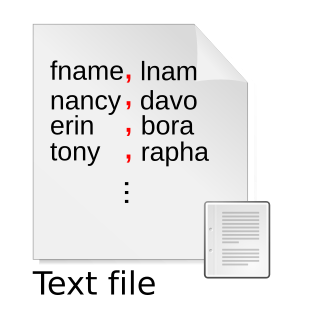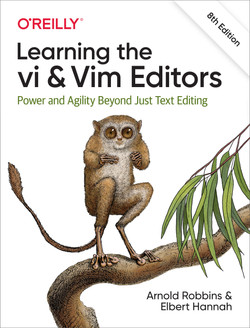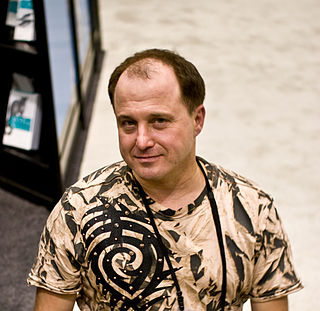
Perl is a high-level, general-purpose, interpreted, dynamic programming language. Though Perl is not officially an acronym, there are various backronyms in use, including "Practical Extraction and Reporting Language".

Randal L. Schwartz, also known as merlyn, is an American author, system administrator and programming consultant. He has written several books on the Perl programming language, and plays a promotional role within the Perl community. He was a co-host of FLOSS Weekly.

Programming Perl, best known as the Camel Book among programmers, is a book about writing programs using the Perl programming language, revised as several editions (1991–2012) to reflect major language changes since Perl version 4. Editions have been co-written by the creator of Perl, Larry Wall, along with Randal L. Schwartz, then Tom Christiansen and then Jon Orwant. Published by O'Reilly Media, the book is considered the canonical reference work for Perl programmers. With over 1,000 pages, the various editions contain complete descriptions of each Perl language version and its interpreter. Examples range from trivial code snippets to the highly complex expressions for which Perl is widely known. The camel book editions are also noted for being written in an approachable and humorous style.

A delimiter is a sequence of one or more characters for specifying the boundary between separate, independent regions in plain text, mathematical expressions or other data streams. An example of a delimiter is the comma character, which acts as a field delimiter in a sequence of comma-separated values. Another example of a delimiter is the time gap used to separate letters and words in the transmission of Morse code.
Robert M. Love is an American author, speaker, Google engineer, and open source software developer.
vile is a text editor that combines aspects of the Emacs and vi editors. These editors are traditionally located on opposing sides of the editor wars, as users of either tend to have strong sentiments against the editor they do not use. vile attempts to reconcile these positions.

Intermediate Perl is a book about the Perl programming language by Randal L. Schwartz, brian d foy and Tom Phoenix, published in 2006 by O'Reilly Media. It was released as a retitled second edition of Learning Perl Objects, References & Modules (ISBN 0-596-00478-8) by Schwartz and Phoenix, published by O'Reilly Media in 2003 to favorable reviews. A second edition of Intermediate Perl was released in 2012.

Raku is a member of the Perl family of programming languages. Formerly named Perl 6, it was renamed in October 2019. Raku introduces elements of many modern and historical languages. Compatibility with Perl was not a goal, though a compatibility mode is part of the specification. The design process for Raku began in 2000.
In computer science, a local variable is a variable that is given local scope. A local variable reference in the function or block in which it is declared overrides the same variable name in the larger scope. In programming languages with only two levels of visibility, local variables are contrasted with global variables. On the other hand, many ALGOL-derived languages allow any number of nested levels of visibility, with private variables, functions, constants and types hidden within them, either by nested blocks or nested functions. Local variables are fundamental to procedural programming, and more generally modular programming: variables of local scope are used to avoid issues with side-effects that can occur with global variables.

Simson L. Garfinkel is an American computer scientist. He is the Chief Scientist and Chief Operating Officer of BasisTech in Somerville, Massachusetts. He was previously a program scientist at AI2050, part of Schmidt Futures. He has held several roles across government, including a Senior Data Scientist at the Department of Homeland Security, the US Census Bureau's Senior Computer Scientist for Confidentiality and Data Access and a computer scientist at the National Institute of Standards and Technology. From 2006 to 2015, he was an associate professor at the Naval Postgraduate School in Monterey, California. In addition to his research, Garfinkel is a journalist, an entrepreneur and an inventor; his work is generally concerned with computer security, privacy and information technology.
Shelley Powers is an American author, web developer and technology architect. She works with and writes about open source, LAMP technologies and web service development, CSS/XHTML design, web graphics and the use of these technologies in the semantic web.

Steven Feuerstein is a author focusing on the Oracle database PL/SQL language, having published several books on this language through O'Reilly Media. Feuerstein has worked with Oracle Database technology - and worked twice for Oracle Corporation - since 1987, and has been developing software since 1980.

brian d foy [sic] is the former publisher and editor of The Perl Review, a magazine devoted to Perl and co-author of several books on Perl including Learning Perl, Intermediate Perl and Mastering Perl. He is also the founder of Perl Mongers, the founder of the White Camel Awards, a frequent speaker at conferences including The Perl Conference and YAPC. He is the author of multiple Perl modules on CPAN and maintains the perlfaq portions of the core Perl documentation. He was a partner at Stonehenge Consulting Services from 1998 to 2009.
Elliotte Rusty Harold is an American computer scientist, lecturer and author of several books on Java and XML and the creator of XOM, an open source Java class library for processing XML data.

Greg Kroah-Hartman is a major Linux kernel developer. As of April 2013, he is the Linux kernel maintainer for the -stable branch, the staging subsystem, USB, driver core, debugfs, kref, kobject, and the sysfs kernel subsystems, Userspace I/O, and TTY layer. He also created linux-hotplug, the udev project, and the Linux Driver Project. He worked for Novell in the SUSE Labs division and, as of 1 February 2012, works at the Linux Foundation.

The Perl Cookbook, ISBN 0-596-00313-7, is a book containing solutions to common short tasks in Perl. Each chapter covers a particular topic area and is divided into around a dozen recipes each on a particular problem. Each recipe has four parts: "Problem", "Solution", "Discussion", and "See Also".
Sean Michael Burke is a Perl programmer, author, and linguist. He was a columnist for The Perl Journal from 1998 and has written several dozen Perl modules for CPAN, as well as books for O'Reilly Media.

Learning the vi and Vim Editors is a tutorial book for the vi and vim text editors written by Arnold Robbins, Elbert Hannah, and Linda Lamb and published by O'Reilly Media. The book is in its 8th edition. The book features a tarsier on the cover, an image which was also used on the cover of O'Reilly's Unix in a Nutshell and has been incorporated into O'Reilly Media. When questioned about the animal choice, publisher Tim O'Reilly described the tarsier as looking "like somebody who had been a text editor for too long."
PerlTidy is a tool written in the Perl programming language to do static code analysis against code written in that same language. It uses either command-line switches or configuration files to reformat Perl scripts so they comply with specified coding rules. The default configuration is an approximation of the Perl Style Guide.

Thomas S. "Tom" Christiansen, nicknamed tchrist or occasionally thoth, is a Unix developer and user known for his work with the Perl programming language.













